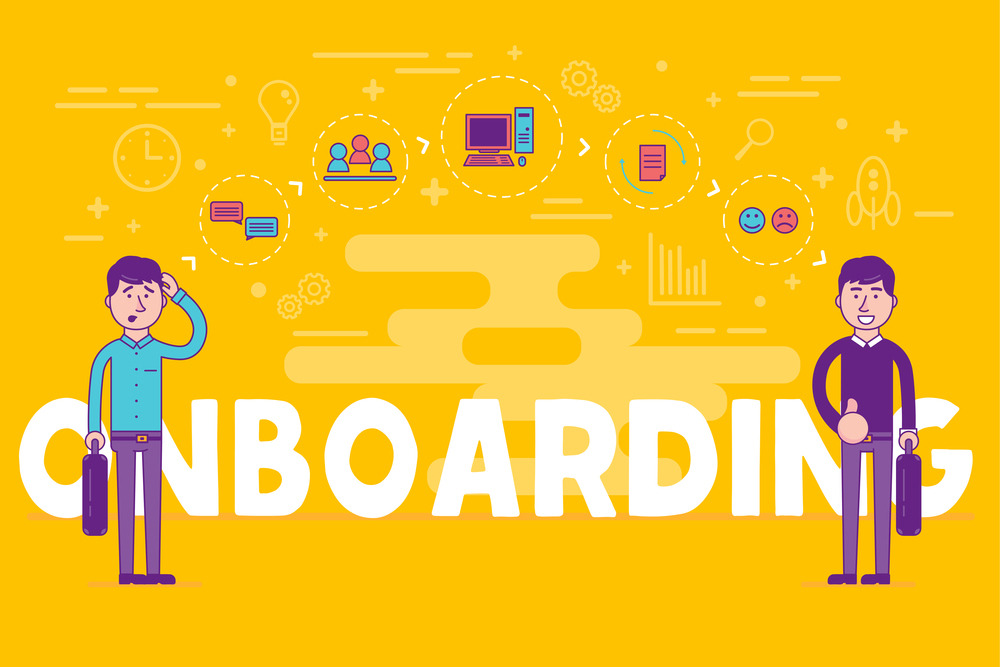When it comes to filling open roles within your company, finally getting a “yes” from a potential candidate can feel like the end of a long road. After all, you’ve probably been recruiting for a while—crafting the job description, casting a wide net, searching for top talent, networking, fielding resumes, and giving multiple interviews all to try and find that one perfect person. But if you’re tempted to kick back and relax once you finally get that “yes,” think again.
Ensuring a smooth transition from being a job candidate to an integrated employee is essential to long-term success. The last thing you want to do is restart the hiring process all over again next month because you made an error in judgment and the talent you’ve found never quite clicks within your company! This transition, known as onboarding, is often overlooked due to how busy and chaotic so many HR professionals are today. But it can’t be skipped or narrowed down to signing some forms. Onboarding is about setting the stage for long-term engagement, productivity, and retention.
It often includes things like:
- A formal orientation
- Job training, either on paper or “on the ground”
- Relationship building with key team members
- Paperwork and policy information
- Setting goals, benchmarks, or key performance indicators (KPI)
If you want new hires to become fantastic employees, creating an onboarding experience that goes above and beyond their expectations will go a long way. Here are three key ways you can create an exceptional onboarding experience so that your new hires become company veterans in no time.
Personalizing the Onboarding Experience
It might be tempting to create a standard onboarding experience for all your employees. And sure—it makes sense to have a program that you can replicate so you don’t have to recreate the wheel. Starting from scratch with every single employee would be an exhausting waste of time. But different people and different roles might require something unique. Be open to creating more personalized experiences so that your new hires can thrive. Each new hire will bring an individual set of skills, experiences, and learning styles to the table.
By taking time to get to know and understand each new hire’s background, and then acknowledging their strengths, you’ll be able to tailor the onboarding process and set them up for success. For instance, some new hires might learn best by sitting through a slideshow about the company, but others might prefer on-the-ground training by being driven around town and introduced to clients. Some will learn all the new material at once, and some might prefer it slowly doled out. By making small tweaks to your process that fit each new hire’s needs, you’ll not only achieve your educational goals but make them feel welcomed and valued from the start. Remember, onboarding isn’t just about going over paperwork and making sure all your policies are in place. It’s also about bringing on a new member of the team and helping them enmesh within your company culture. These little personalized touches will help do just that.
Creating a Culture of Welcome
How open does your company feel to newcomers? Is it cliquey with closed ranks, or warm and friendly? These can be hard things for management or HR professionals to sniff out, but they make a huge difference when it comes to onboarding new talent. Walking into a new job where you have all the necessary skills but don’t feel welcomed is incredibly difficult, and you don’t wish that on any of your new employees. If you’re looking for people to stick around, you need to create a culture of welcome, stat.
But how do you go about doing that? It involves more than showing them how to work the Keurig. For starters, consider connecting each new hire with a mentor. This will be their touch person for questions that aren’t so human-resources oriented—questions about the culture, the vibe, and how things are “really done” in the office. A mentor can be a great way for a new hire to truly feel rooted within their position. You could also consider starting a welcoming committee within your company that can meet the needs of new hires, plan new hire meet-and-greets, and assist with any other onboarding needs. Remember that creating a culture of welcome starts at the top. If management seems friendly and excited about new hires, there will be a trickle-down effect to the rest of the company.
Providing Ongoing Support After the I’s Have Been Dotted
Lastly, it’s important to remember that onboarding requires ongoing support. Many of us think of onboarding as a task that takes place within the first few days or weeks of an employee’s tenure. True—that first burst of employment is vital to ensuring long-term success within your partnership. But the fact is that onboarding takes as long as it takes for an employee to feel like they’re thriving within the role. That might mean weeks, months, or even a year, depending on the seasonality of your business.
Therefore, the most important part of onboarding might even be the after-onboarding. This is the point in time when all the formal onboarding has passed, the papers have been signed, the training sessions have wrapped up, and an employee is now doing the work. Who do they have to ask questions to now? How will you make sure they are on task, and that they have the tools required? Regular, consistent support after an employee’s hire is vital. That might look like a monthly meeting with HR, or the above-mentioned mentorship program, but whatever the employee may need, it is critical to ensure ongoing support for all new hires.
Claire Swinarski is a Contributing Editor at HR Daily Advisor.
The post <strong>3 Components of an Above-and-Beyond Onboarding Experience</strong> appeared first on HR Daily Advisor.
